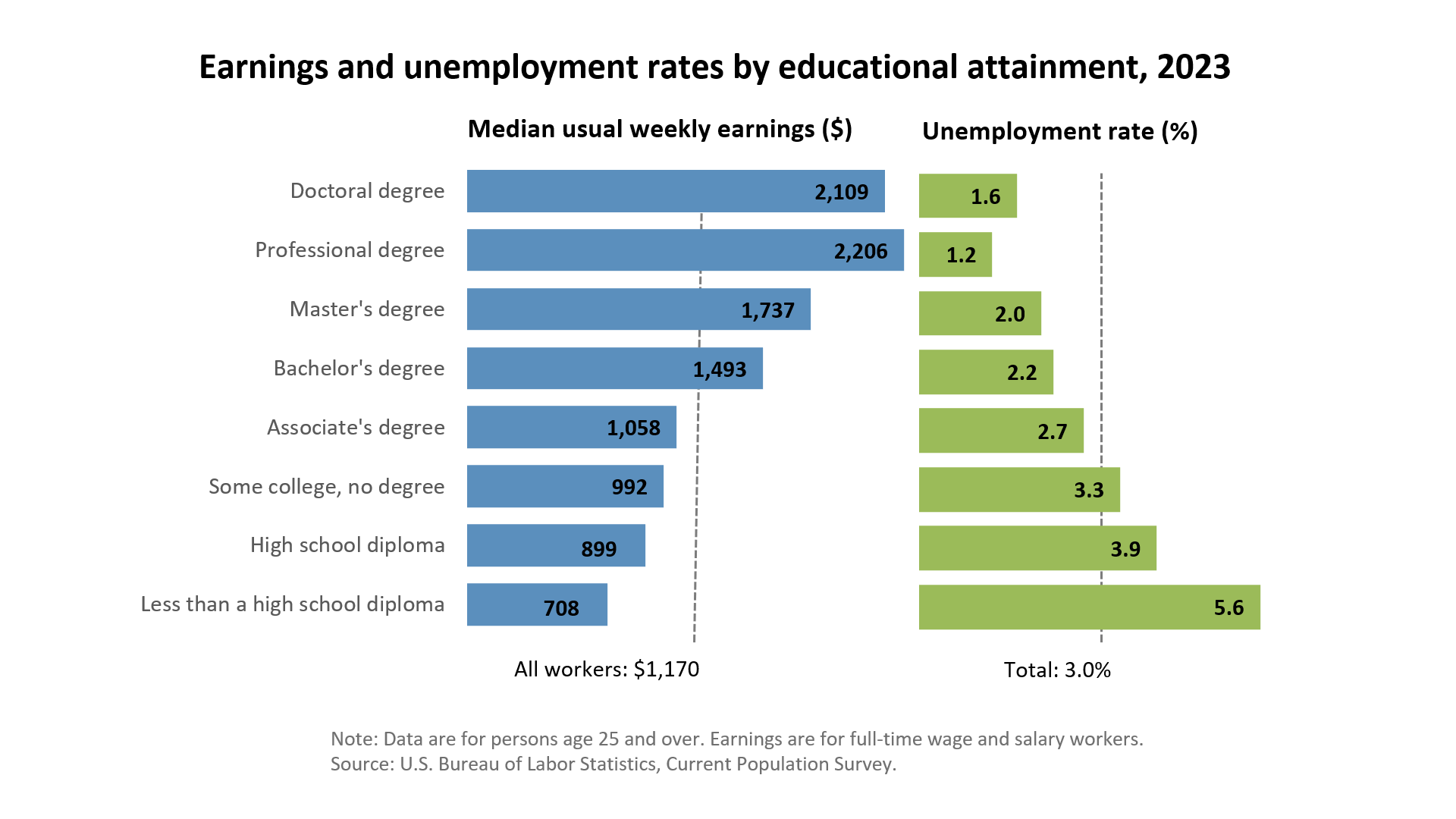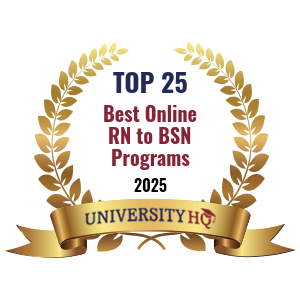Get Matched With Online Colleges
Incoming students on the main campus of Ohio State University are members of a large student population. More than 61,000 students attend classes here. About 46,800 students are undergraduates and the remaining 14,350 are graduate students. When students aren’t in class or studying, they’ll be able to easily spend time in the surrounding city of Columbus and enjoy their free time shopping, going to restaurants, or just relaxing. If you like to relax around nature, the Chadwick Arboretum North is close by.
Search All Programs
Overview of Ohio State University (OSU)
Columbus is located near several highways and expressways, so it’s easy to get around. However, if you have your car on campus, be careful as you leave. Those expressways and highways can make for dangerous driving.
There is plenty of campus housing available; in fact, this is part of what you’re charged for, so it’s a good idea to live in the dorms.
The student-to-faculty ratio is a little high at 19 to 1, which means you might need to schedule appointments to see your professors during their office hours. They may not have enough time after class, even to answer a quick question, because their time is required elsewhere.
General Information
| School Type | Public |
|---|---|
| Campus Setting | City: Large |
| Campus Housing | Yes |
| Student Faculty Ratio | 19:1 |
| Graduation Rate | 84% |
| Year Founded | 1870 |

Student Enrollment
Total Students61,170
46,820
14,350
Undergraduate Student
Male 23,878
Female 22,942
Graduate Student
Male 7,319
Female 7,032
Explore Map
Top Rankings For Ohio State University - Main Campus
OSU Acceptance Rate and Admissions
APPLICATIONS48,077
ACCEPTANCE25,000
Acceptance Rate52%
Enrollment 8,000
| Admissions | |
|---|---|
| Application Fee | $60 |
| High School GPA | Required |
| High School Rank | Required |
| High School Transcripts | Required |
| College Prep Courses | Required |
| Recommendations | Recommended |
| SAT/ACT | Required |
| TOEFL (Test of English as a Foreign Language) | Required |
| Application Deadline | February 1 |
| Common Application Accepted | Yes |
OSU Tuition Cost & Financial Aid
Compared to other schools you may have considered, the total cost for an education at Ohio State University isn’t particularly high. This price includes tuition, room/board, books, supplies, and other costs. With all of that together, you’re looking at a total of around $27,912 a year.
Many families will still need some help covering this cost. In a recent academic year, the average net price was $18,694 - this is the amount remaining after financial aid has been taken into account. This cost varies depending on how much financial aid you qualify for, so it is broken down below by family income.
- Families earning up to $30,000 pay around $8,932
- Families earning between $30,001 and $48,000 pay around $9,861
- Families earning between $48,001 and $75,000 pay around $13,982
- Families earning between $75,001 and $110,000 pay around $21,364
- Families earning more than $110,001 pay around $24,348
Once your request for financial aid has been received, you can also be awarded grants, apply for scholarships and work-study, or apply for student loans, though that should be the last thing you do.
| Average net price | 2017-2018 |
|---|---|
| Net Price | $18,694 |
| Average Total Aid | $10,273 |
| Students Receiving Financial Aid | 82% |
| Room & Board | $12,748 |
Sticker Price
- Tuition In-State - $11,084
- Tuition Out-of-State - $32,061
- Books and Supplies - $1,082
- Room & Board - $12,748
- Other - $2,998
Academics
The retention rate is the rate at which new students return and enroll at Ohio State University for their second year. For Ohio State, this is 95%, meaning that 95 out of every 100 students returns for their sophomore year.
Ohio State University’s 4-year graduation rate is 59%. However, it’s becoming more common for students to feel the need to wait for one or two more years before graduating. At the 6-year mark, the graduation percentage goes up to 84% of remaining students. Some degree programs are challenging enough that the extra two years is necessary.
If you find you need to work during the day, you won’t have the option of evening classes. However, Ohio State does offer distance learning (online education) for individual classes which may help you create some flex in your schedule.
Degree programs offered at Ohio State University include agriculture, architecture, biological and biomedical sciences, business, communication and journalism, education, engineering, English Language and Literature, family and consumer sciences/human sciences, foreign languages, health professions, history, legal professions and studies (graduate program), mathematics and statistics, natural resources and conservation, leisure and fitness studies, physical sciences, psychology, public administration and social service professions social sciences, and visual and performing arts.
Retention
Rate
4 year
Graduation
Rate
6 year
Graduation
Rate
Student Population Total
Student Population 61,170
46,820
14,350
Most Popular Programs & Majors
(# of Diplomas Awarded by Subject)
| All Business Majors | 2,222 Total Graduates / 20% |
|---|---|
| Finance, General | 660 Graduates |
| Marketing/Marketing Management, General | 460 Graduates |
| Accounting | 423 Graduates |
| Logistics, Materials, and Supply Chain Management | 152 Graduates |
| Operations Management and Supervision | 137 Graduates |
| All Engineering Majors | 1,737 Total Graduates / 16% |
| Computer Engineering, General | 296 Graduates |
| Electrical and Electronics Engineering | 274 Graduates |
| Chemical Engineering | 243 Graduates |
| Mechanical Engineering | 199 Graduates |
| Agricultural Engineering | 159 Graduates |
| Health Professions and Related Programs | 1,061 Total Graduates / 10% |
| Allied Health and Medical Assisting Services, Other | 289 Graduates |
| Registered Nursing/Registered Nurse | 259 Graduates |
| Pharmacy | 110 Graduates |
| Public Health, General | 108 Graduates |
| Audiology/Audiologist | 91 Graduates |
| All Social Science Majors | 1,041 Total Graduates / 9% |
| Economics, General | 267 Graduates |
| Political Science and Government, General | 266 Graduates |
| Criminology | 110 Graduates |
| Sociology | 85 Graduates |
| Anthropology | 57 Graduates |
| All Biological & Biomedical Majors | 890 Total Graduates / 8% |
| Biology/Biological Sciences, General | 413 Graduates |
| Neuroscience | 209 Graduates |
| Zoology/Animal Biology | 95 Graduates |
| Microbiology, General | 53 Graduates |
| Biochemistry | 44 Graduates |
| Communication, Journalism, and Related Programs | 520 Total Graduates / 6% |
| Speech Communication and Rhetoric | 452 Graduates |
| Journalism | 43 Graduates |
| Communication, Journalism, and Related Programs, Other | 25 Graduates |
| All Other Diplomas | 33% |
Outcome & Salary
Once you graduate and start earning a regular salary, you should find that your income is higher than what you paid for tuition and fees. Graduate’s average salaries are $70,000. Early-career salaries are a little lower at $55,300 and mid-career salaries jump to around $98,600.
The total cost of education is the net price, which for Ohio State comes in at around $74,776+. However, once you start earning an income, you’ll be able to recognize a return on your educational investment (ROI). With a graduate’s 10-year salary earnings potential being $700,000 and their 10-year projected ROI being $625,224, you can see by the numbers how much your education will help you.
High school graduates who do not attend college earn a national average salary of $38,792. Their 10-year projected income is $387,920 and their 20-year projected income is $775,840.
| Graduates Salary | |
|---|---|
| College Grads Early Career Salary | $55,300 |
| College Grads Average Salary | $70,000 |
| College Grads Mid Career Salary | $98,600 |
| Return on Investment (ROI) | |
|---|---|
| 10 Year Salary Earnings Potential | $700,000 |
| 20 Year Salary Earnings Potential | $1,686,000 |
| Cost of Education (Net Price) 4 Year | $74,776 |
| 10 Year Projected ROI | $625,224 |
| 20 Year Projected ROI | $1,611,224 |
| No College Education Salary Comparison | |
|---|---|
| National Average Salary | $38,792 |
| 10 Year Projected Income | $387,920 |
| 20 Year Projected Income | $775,840 |

Related Top College Resources







































